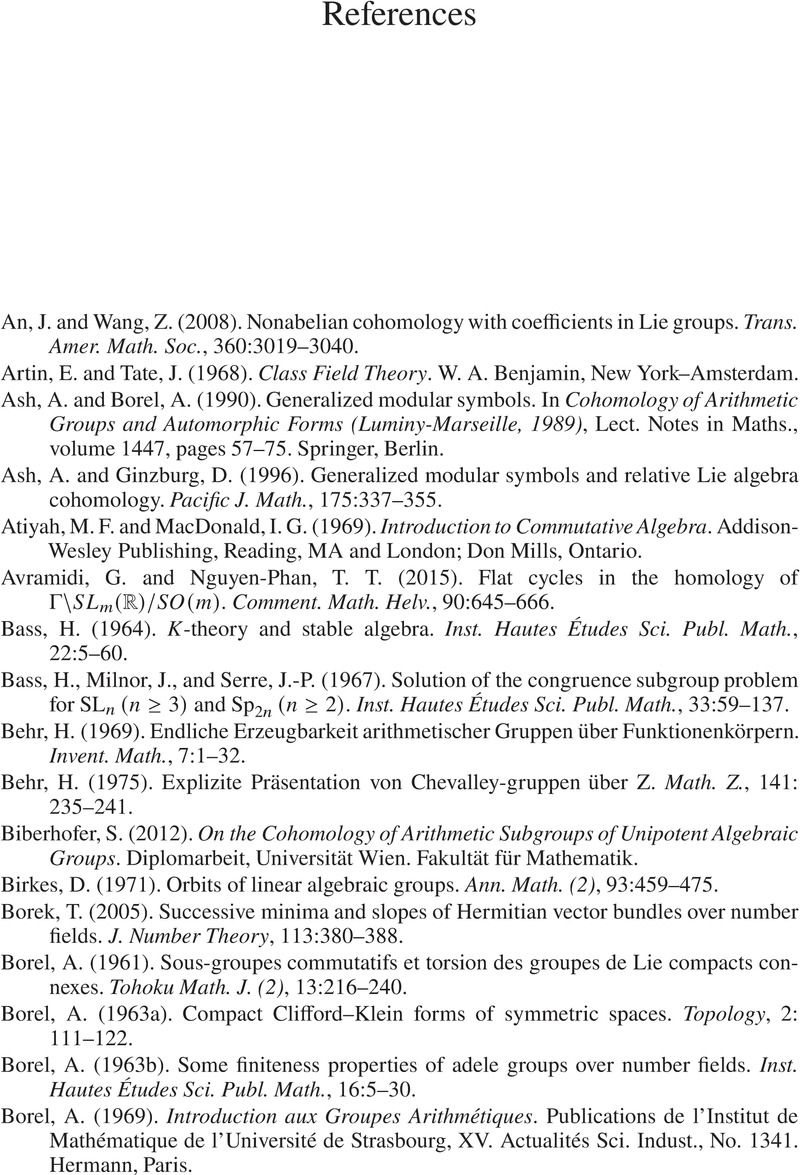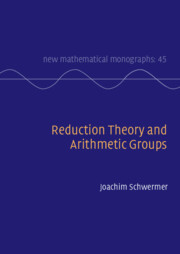Book contents
- Frontmatter
- Contents
- Preface
- Part I Arithmetic Groups in the General Linear Group
- 1 Modules, Lattices, and Orders
- 2 The General Linear Group over Rings
- 3 A Menagerie of Examples: A Historical Perspective
- 4 Arithmetic Groups
- 5 Arithmetically Defined Kleinian Groups and Hyperbolic 3-Space
- Part II Arithmetic Groups Over Global Fields
- 6 Lattices: Reduction Theory for GLn
- 7 Reduction Theory and (Semi)-Stable Lattices
- 8 Arithmetic Groups in Algebraic k-Groups
- 9 Arithmetic Groups, Ambient Lie Groups, and Related Geometric Objects
- 10 Geometric Cycles
- 11 Geometric Cycles via Rational Automorphisms
- 12 Reduction Theory for Adelic Coset Spaces
- Part III Appendices
- Appendix A Linear Algebraic Groups: A Review
- Appendix B Global Fields
- Appendix C Topological Groups, Homogeneous Spaces, and Proper Actions
- References
- Index
- References
References
Published online by Cambridge University Press: 01 December 2022
- Frontmatter
- Contents
- Preface
- Part I Arithmetic Groups in the General Linear Group
- 1 Modules, Lattices, and Orders
- 2 The General Linear Group over Rings
- 3 A Menagerie of Examples: A Historical Perspective
- 4 Arithmetic Groups
- 5 Arithmetically Defined Kleinian Groups and Hyperbolic 3-Space
- Part II Arithmetic Groups Over Global Fields
- 6 Lattices: Reduction Theory for GLn
- 7 Reduction Theory and (Semi)-Stable Lattices
- 8 Arithmetic Groups in Algebraic k-Groups
- 9 Arithmetic Groups, Ambient Lie Groups, and Related Geometric Objects
- 10 Geometric Cycles
- 11 Geometric Cycles via Rational Automorphisms
- 12 Reduction Theory for Adelic Coset Spaces
- Part III Appendices
- Appendix A Linear Algebraic Groups: A Review
- Appendix B Global Fields
- Appendix C Topological Groups, Homogeneous Spaces, and Proper Actions
- References
- Index
- References
Summary

- Type
- Chapter
- Information
- Reduction Theory and Arithmetic Groups , pp. 350 - 356Publisher: Cambridge University PressPrint publication year: 2022



